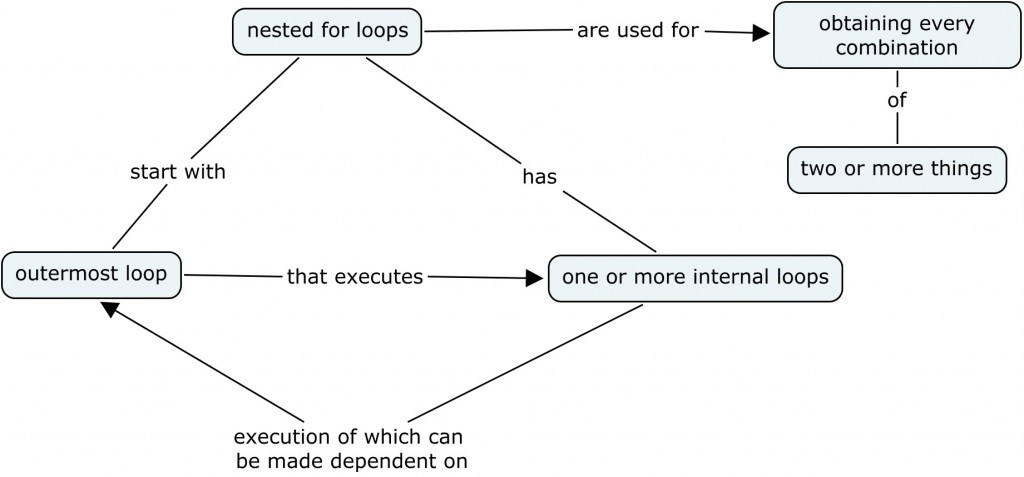I picked ‘nested for loops’ as my topic (book/python.html#s:nestloop and http://software-carpentry.org/2012/10/key-points/). Thanks a lot Ross, for pointing to cmap, it is a great little program. Here is my first throw at a concept map.
Worked examples:
One example to illustrate the concept
for i in 'ABC':
for j in 'abc':
print i+j
Aa
Ab
Ac
Ba
Bb
Bc
Ca
Cb
Cc
Exercises
1) adjust the example code so that the output becomes
Ca
Cb
Cc
Ba
Bb
Bc
Aa
Ab
Ac
Solution:
for i in 'CBA':
for j in 'abc':
print i+j
2) Finish this code:
for i in range(1,4):
for j in range(1,4):
print ____
1
2
3
2
4
6
3
6
9
Solution:
print i*j
3) without running it, what will this code’s output be:
dinuc = []
for first_base in 'ACGT':
for second_base in 'ACGT':
dinuc.append(first_base + second_base)
print dinuc
Solution:
['AA', 'AC', 'AG', 'AT', 'CA', 'CC', 'CG', 'CT', 'GA', 'GC', 'GG', 'GT', 'TA', 'TC', 'TG', 'TT']
4) what does this code do:
for i in list1:
for j in list2:
if i == j:
matches_found.append(i)
How could you do this in another way?
Solution: returns elements common between list1 and list2. Alternative: use sets and their intersect
Real world example: exercise 3, —> all permutations of dinucleotide (two-character) DNA sequences
Explain how this concept relates to something a scientist might actually want to do:
relates to 15-17:. How can I analyze/manage/reformat data, and 19, how to find something in data.
